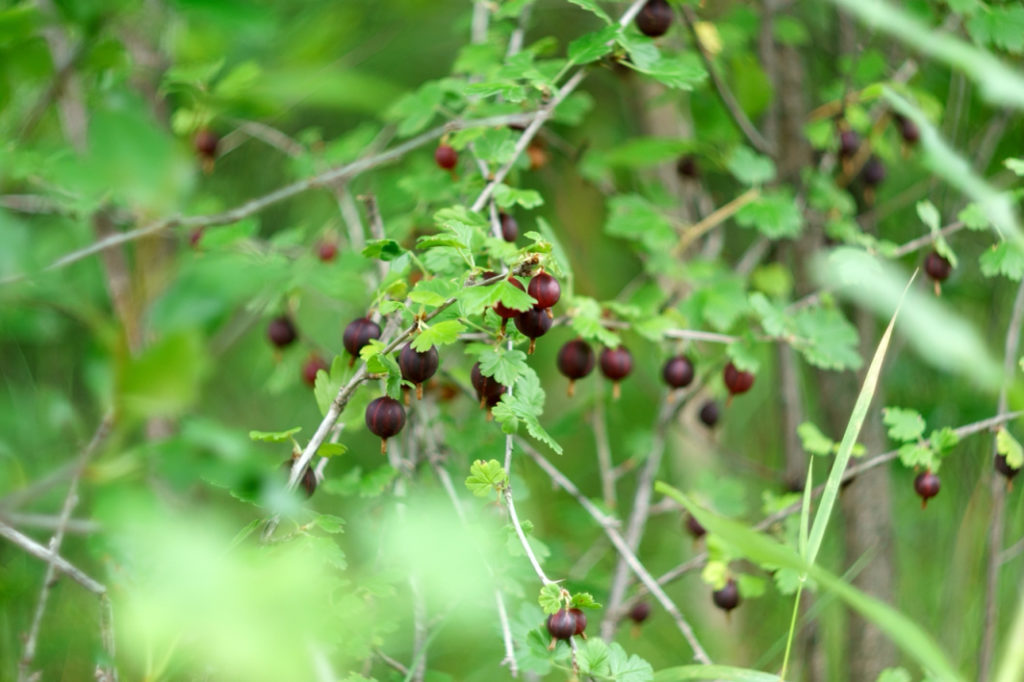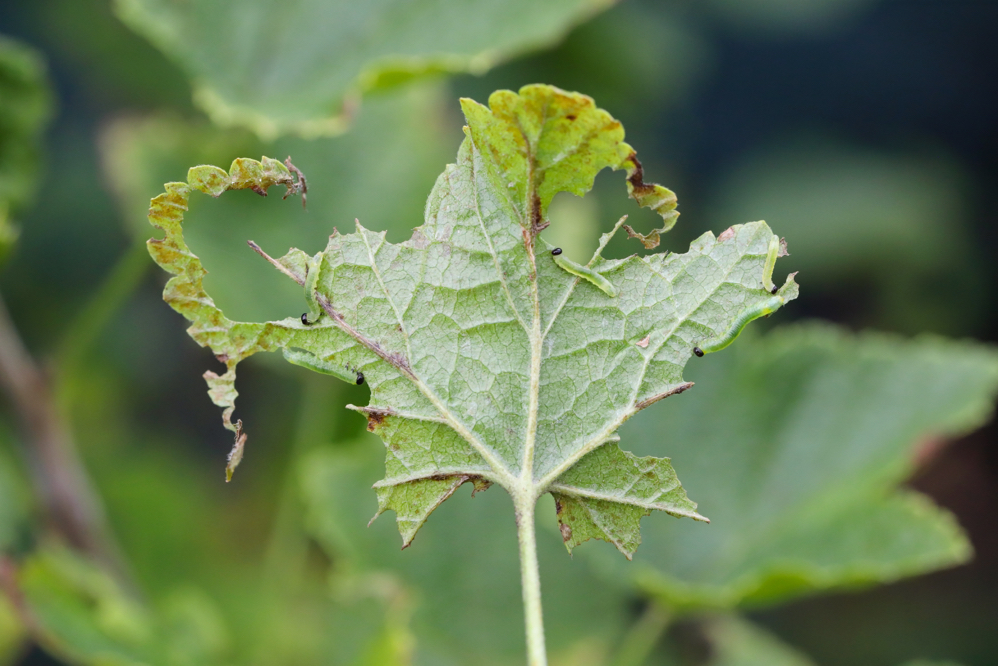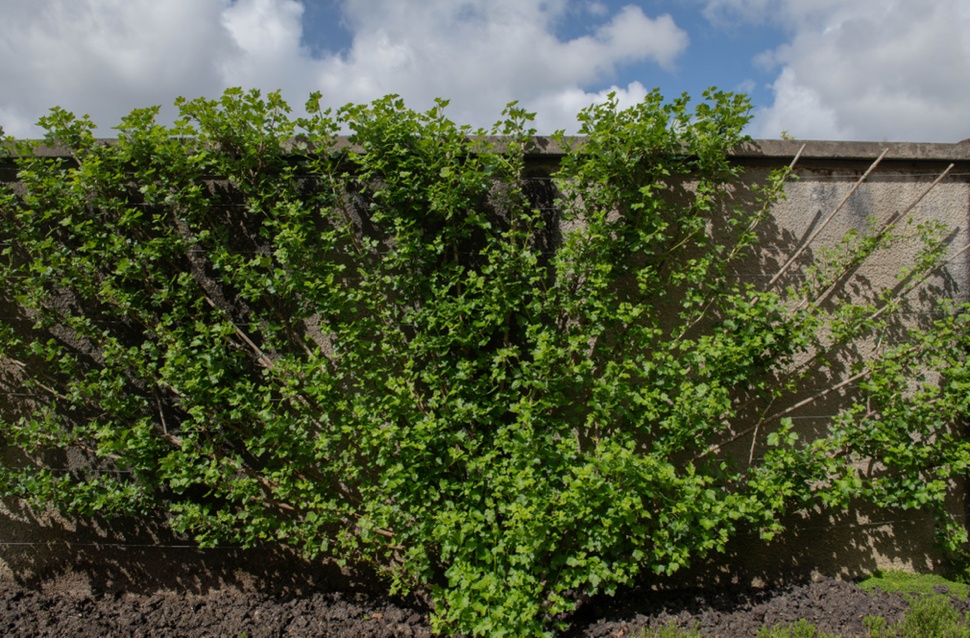Gooseberry Sawflies Can Cause Defoliation And A Lower Yield – Try These Organic Solutions

FRUIT > GOOSEBERRY > SAWFLY

Elizabeth is a Permaculture Garden Designer, Sustainability Consultant and Professional Writer, working as an advocate for positive change. She graduated from the University of St. Andrews with an MA in English and Philosophy and obtained a Diploma in Applied Permaculture Design from the Permaculture Association.
Reviewed By COLIN SKELLY

Colin is a Horticulturist and Horticultural Consultant with experience in a range of practical and managerial roles across heritage, commercial and public horticulture. He holds the Royal Horticultural Society’s Master of Horticulture award and has a particular interest in horticultural ecology and naturalistic planting for habitat and climate resilience.
IN THIS GUIDE
GOOSEBERRY GUIDES
Container Growing
Harvesting
Propagation
Pruning
Sawfly
Varieties
Gooseberries are generally relatively easy and low-maintenance plants to grow in your garden, and even a single plant can produce abundant yields of fruit that can be used in a range of different ways.
One problem that can arise fairly commonly is gooseberry sawfly.
Gooseberry sawflies will rarely kill gooseberry plants, but they can lead to unsightly areas of defoliation and can affect your yield if they are present in larger numbers.
Sawfly populations can be relatively easily kept in check with an integrated pest management approach in an organic garden.
Read on for a more in-depth discussion of the above.
What Is Gooseberry Sawfly?
There are three types of sawfly that eat the leaves of gooseberry bushes:
- The common gooseberry sawfly (Euura ribesii)
- The pale spotted gooseberry sawfly (Euura leucotrichus)
- The small gooseberry sawfly (Pristiphora appendiculata)
All of these sawflies are members of the Symphyta suborder of the Hymenoptera insect family (to which bees, ants and wasps belong).1Ants, Wasps, Bees and Sawflies: Order Hymenoptera. (n.d.). The Australian Museum. Retrieved March 16, 2023, from https://australian.museum/learn/animals/insects/sawflies-wasps-bees-ants-hymenoptera/

They are three of around 500 sawfly species found in the British Isles.2Sawflies. (n.d.). NatureSpot. Retrieved March 16, 2023, from https://www.naturespot.org.uk/gallery/sawflies
Sawflies are named for the egg-laying organ of the females, which looks somewhat like a saw.3Sawflies. (n.d.-b). University of Minnesota. Retrieved March 16, 2023, from https://extension.umn.edu/yard-and-garden-insects/sawflies
Using this appendage, the sawflies mentioned above will lay their eggs onto gooseberry plants.
These eggs then hatch into caterpillar-like larvae.
Identifying Gooseberry Sawfly
The first thing you notice with the presence of sawfly might be their impact on the gooseberry plant, rather than the insects themselves.
If you notice that entire branches of leaves have been stripped from the plant, then these sawfly larvae are likely to be the culprits.
However, you may also be able to spot these insects, both in adult form and in their larval stages.

The common gooseberry sawfly adults are yellow and black-winged insects.
The females are 5-7mm long and are yellow with black heads and black marks on their thoraxes.
Males look rather similar but have more black on them.
This species has larvae that grow to around 2cm long and they are pale green, with many black spots and black heads.

Pale spotted gooseberry sawfly larvae are slightly smaller in size and they also have pale green heads.
This species has only one generation per year, and the larvae are present during May and June.
The small gooseberry sawfly on the other hand, can have up to four generations from late April onwards.
These larvae are pale green.
How To Deal With Sawflies
The first thing to understand is that the presence of gooseberry sawfly need not be considered a problem at all.
Within a balanced garden ecosystem, these insects are an extremely valuable addition and won’t usually kill your plants, and, when their populations are kept in check, will not typically significantly reduce your yield.
Even when these larvae eat every single leaf on a gooseberry, the plant can, remarkably, usually recover the following year.

Though with such an extreme attack, your yield is almost certain to be significantly reduced.
It is important to think of these insects not as pests, but as a welcome visitor in a wildlife-friendly garden – typically doing little more than making plants look a little unsightly after they have feasted on them.
Sawflies are a good source of food for many garden birds, and for other predators like ground beetles.
So encouraging these species in your garden can help you keep the sawfly numbers down and ensure that, while they are present, they are not present in such high numbers that you lose all the leaves on gooseberry bushes.

In my organic forest garden, I do find that the odd branch here and there is defoliated by sawflies on my gooseberry bushes.
However, I rarely see much more than the odd branch, since birds and other wildlife in the biodiverse space eat the larvae before their populations get out of control.
In fact, defoliated branches tend to be those closest to the ground, hidden in other plants below, where birds cannot easily pick off the larvae before they cause any problems.
“The first year I planted gooseberries on my allotment, sawfly decimated the foliage,” shares Master Horticulturist Colin Skelly.
“I handpicked off the larvae I could find. The following year and subsequently there was far less damage.

“I think this was in large part due to the garden ecosystem taking a while to develop complexity and more balance as the allotment was newly planted at that stage.”
On the plants in clear view of birds (and us), I tend not to see significant defoliation.
So, to tackle gooseberry sawfly where they are present in large numbers – increasing biodiversity is the most important strategy.
Short term, you can also be vigilant and pick off sawflies by hand when you spot them and, if needed, nematode controls are available.
However, in an organic garden, you can certainly live and let live to a degree and work with nature in your garden.
References
- 1Ants, Wasps, Bees and Sawflies: Order Hymenoptera. (n.d.). The Australian Museum. Retrieved March 16, 2023, from https://australian.museum/learn/animals/insects/sawflies-wasps-bees-ants-hymenoptera/
- 2Sawflies. (n.d.). NatureSpot. Retrieved March 16, 2023, from https://www.naturespot.org.uk/gallery/sawflies
- 3Sawflies. (n.d.-b). University of Minnesota. Retrieved March 16, 2023, from https://extension.umn.edu/yard-and-garden-insects/sawflies
